If you're curious about “BigCommerce vs PrestaShop,” you're probably on a quest to find the right fit for your business! In this article, I'll provide a friendly and detailed comparison of these two popular platforms, helping you figure out which one aligns best with your goals and plans for growth.
Here’s what we’ll explore together today:
- Ease of use;
- Design and customization;
- Features and functionalities;
- Integrations and apps;
- Pricing and total costs;
- Scalability potential.
Let’s dive in and find the perfect match for your business!
Introduction to BigCommerce and PrestaShop
Overview of BigCommerce
BigCommerce is a friendly and easy-to-use all-in-one eCommerce platform that makes it a breeze to set up and run your online store, even if you're not a tech whiz! As a Software as a Service (SaaS) solution, it takes care of everything for you, from hosting to updates.
Here are the key features:
- Simple drag-and-drop store builder for easy design and customization.
- Built-in SEO tools and marketing features to boost your store’s visibility.
- Multi-channel selling, with integrations for platforms like Amazon, eBay, and social media.
- Scalability options that support everything from small stores to enterprise-level businesses, including custom APIs for advanced needs.
BigCommerce is perfect for small to medium-sized businesses (SMBs) looking for a smooth, easy-to-manage platform with minimal coding hassles. And if you're running a larger enterprise, their Enterprise plan offers even more advanced features and support for handling high-volume sales.
Overview of PrestaShop
PrestaShop is a open-source platform that gives you plenty of flexibility and control over your online store. Unlike BigCommerce, it does require you to set up your own hosting and take care of things like security and updates, but that also means you have more freedom to create exactly what you want!
Here are some of the features that make PrestaShop stand out:
- Fully customizable codebase, so developers can create unique and tailored solutions.
- Access to a vast marketplace of modules and themes, offering features like advanced analytics, custom payment options, and marketing tools.
- Support from a strong community, with additional professional help available for those who choose paid support.
- Built-in support for multilingual and multi-currency stores, making it ideal for global businesses.
PrestaShop shines for medium to large businesses that have access to development resources or are ready to invest a bit in creating a customized store. Its flexibility allows tech-savvy entrepreneurs and development agencies to build exactly what they need, and its open-source nature makes it possible to add virtually any functionality.
BigCommerce vs PrestaShop: Ease of Use
When choosing an eCommerce platform, ease of use is a big deal, especially if you’re not a tech expert. Below, I will break down how BigCommerce vs PrestaShop handle the setup process, what the learning curve looks like, and the overall user experience each one offers.
Setting up a store with BigCommerce
BigCommerce is all about simplicity, making it a great choice for those who don’t have a lot of technical know-how. The platform provides a step-by-step setup wizard, guiding users through initial configurations, from choosing a template to configuring shipping options and payment gateways.
But what makes BigCommerce easy to use?
You’ll find everything in one clean, easy-to-navigate dashboard. You can manage your products, inventory, and orders without any technical skills required.
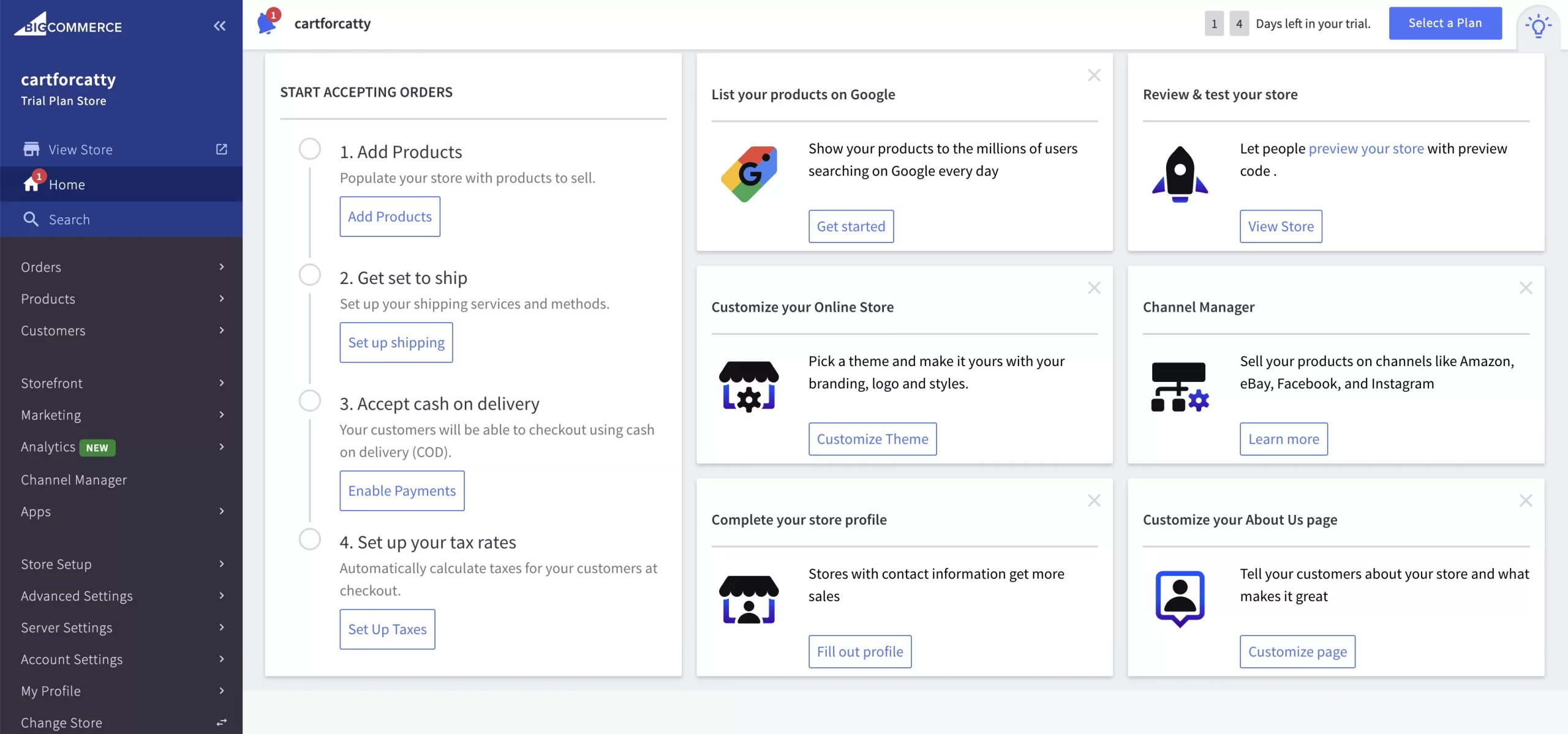
What’s more, the platform has a drag-and-drop editor, so you can design and customize your store’s layout effortlessly. No coding knowledge is needed, it’s just drag, drop, and you’re done.
However, many users have reported technical issues, such as server disconnections and unresolved bugs like HTTP status 500 errors, which can disrupt business operations. Additionally, some have expressed frustration with customer support, citing long wait times and ineffective responses when trying to resolve these issues.
Setting up a store with PrestaShop
In contrast, PrestaShop offers significantly more flexibility, but it also has a steeper learning curve. With access to the entire source code, you can customize your store in great detail, allowing it to fit your specific needs. Additionally, you have the freedom to choose your own hosting, establish your own security measures, and configure technical settings as you prefer.
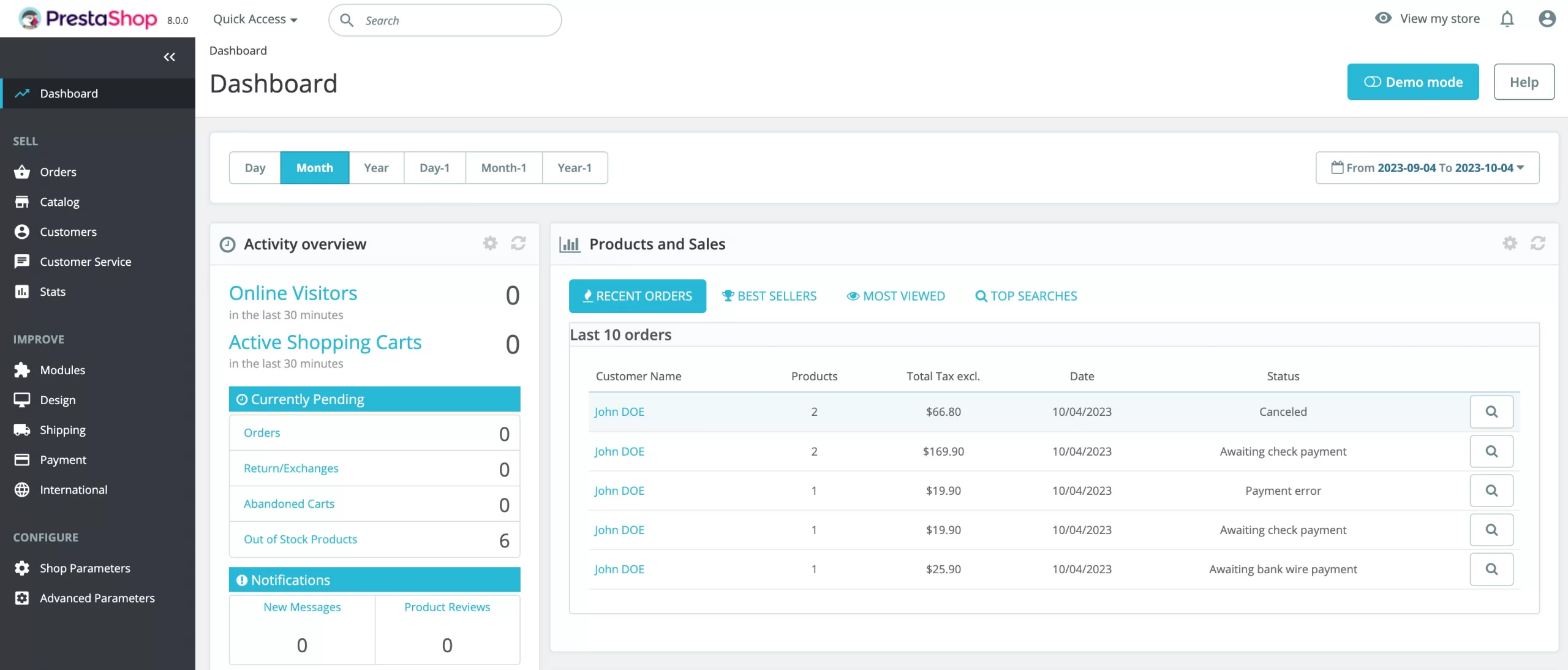
However, I find PrestaShop’s interface to be challenging and not very intuitive, especially when setting up complex features like shipping options or bulk pricing discounts.
While the increased control over your store comes with advantages, it also brings added responsibility. You will need to manage your own hosting, establish security protocols, and handle your domain setup on your own. Although this could save costs and provide extensive customization options, it means you'll need either some technical expertise in-house or the option to hire external help to ensure everything runs smoothly.
Editor's thoughts: PrestaShop is fantastic if you want the ability to customize everything and have the technical resources to support it. However, if you’re looking for a more hands-off, easy-to-navigate experience, BigCommerce is the simpler choice.
Design and Customization: BigCommerce vs PrestaShop Themes
When it comes to building an online store that looks great and works seamlessly, design and customization options are key. In this section, we’ll compare how BigCommerce vs PrestaShop handle themes and customization so you can see which one might be the best fit for your business’s style and needs.
BigCommerce theme options and customization flexibility
BigCommerce makes it easy to create a professional-looking store with its selection of pre-designed themes for different industries and business styles.
You can choose from 200+ free and paid themes designed for niches like fashion, electronics, and food & beverage to match your brand. One of the things I love most is that all the themes on BigCommerce are mobile-responsive, so your store will look fantastic and work seamlessly on any device. Plus, BigCommerce’s drag-and-drop builder allows you to use your store’s layout, add content blocks, and adjust elements without needing any coding skills.
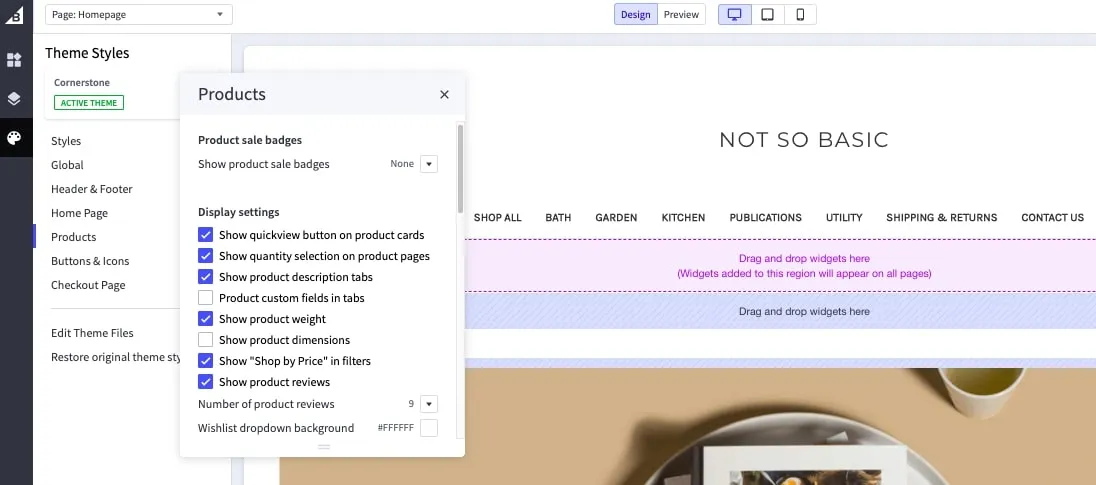
If you have coding skills or a developer on hand, BigCommerce also gives you access to its Stencil framework. This approach lets you dive even deeper into customization using HTML, CSS, and JavaScript for a more personalized design.
PrestaShop theme options and flexibility
PrestaShop offers extensive design flexibility through its theme marketplace, which features both free and premium options that users can download and customize.
As an open-source platform, PrestaShop lets you fully access and modify theme files. Developers can even build a custom theme from scratch, making it perfect for businesses that want a unique, tailored store design.
There are plenty of third-party themes available in the PrestaShop marketplace. These can be further customized to suit specific business needs, providing even more options for those looking to stand out.
You can enhance your store’s look and functionality with modules that add features like product sliders, countdown timers, and customizable banners. These extras help you build a visually appealing and dynamic online store. Just like BigCommerce, PrestaShop’s themes are mobile-responsive that ensures your store looks great and works well on smartphones and tablets.
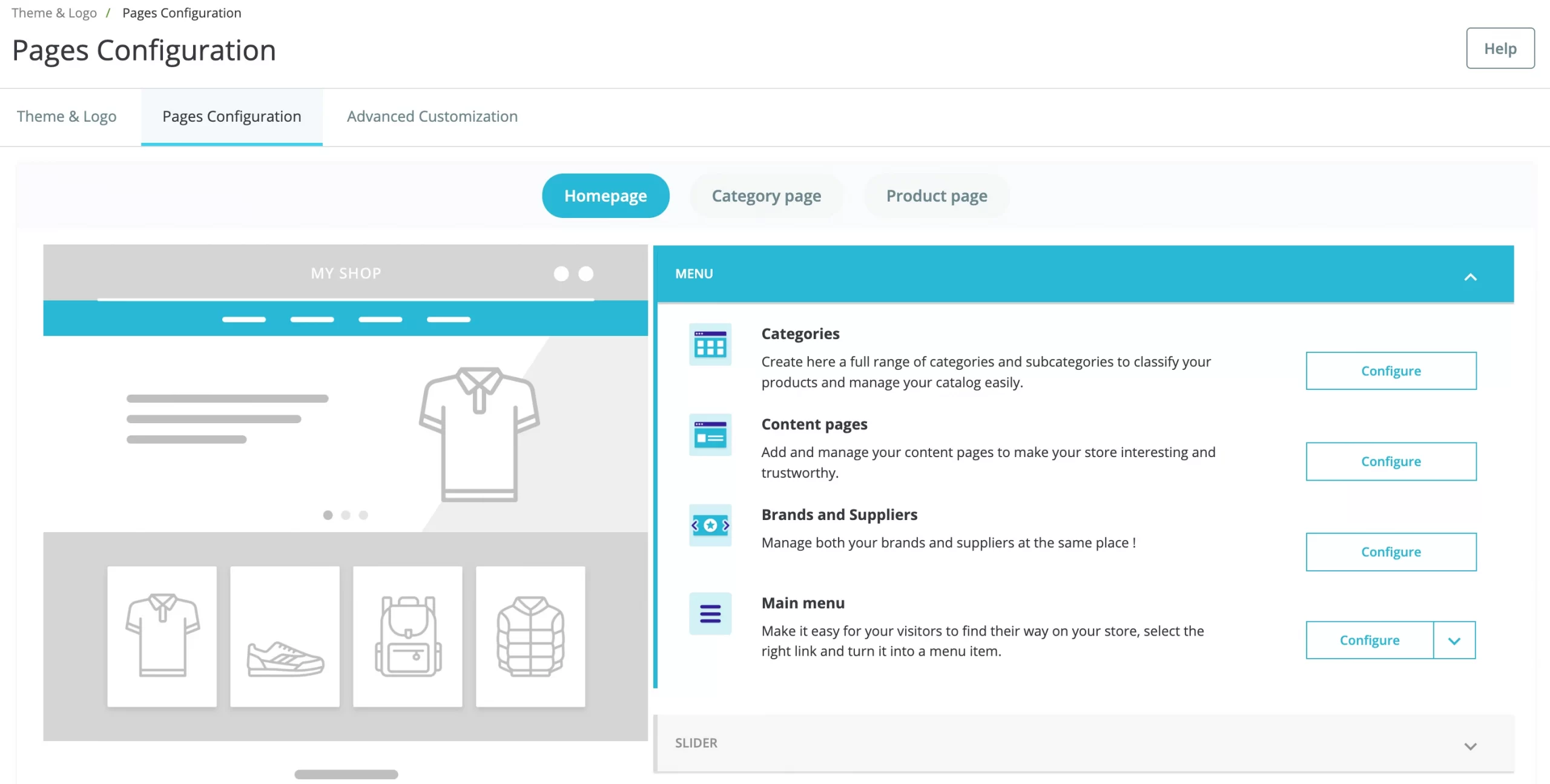
PrestaShop’s design flexibility is perfect for businesses with specific aesthetic requirements and access to development resources. However, if you’re not familiar with coding or prefer a simpler, no-code approach, the platform’s extensive customization options might feel overwhelming.
Editor's thoughts: In this case, I prefer BigCommerce more. BigCommerce offers a nice balance as its built-in tools make it simple for beginners to customize their stores, while developers can still access the code for more advanced adjustments.
Features and Functionalities Comparison
When you’re picking an eCommerce platform, it’s important to look at the features and tools it offers because these can directly impact how you manage your store, market your products, and grow your business.
Seamlessly migrate your store to a more robust place!
LitExtension can safely transfer your products, customers, and orders to unlock more growth on the new platform.

1. Inventory and product management features
Both platforms offer solid tools for managing products and inventory, but they work a bit differently. BigCommerce comes with built-in features like bulk product uploads, automatic inventory tracking, and options for managing product variants. It’s especially convenient if you want to sell on multiple platforms like Amazon, as you can manage everything from one central dashboard.
PrestaShop also offers similar inventory management capabilities, but for more advanced features like bulk product management or automated updates, you’ll likely need to add extra modules. This is great for customization, but it might come with extra costs.
2. Marketing and SEO tools
Good marketing and SEO tools are essential for driving traffic and boosting sales. BigCommerce has built-in marketing tools like email campaign features, coupon management, and SEO functions like customizable URLs, meta descriptions, and support for Google AMP. It’s designed to be user-friendly, so you can optimize your store without needing deep technical skills.

While BigCommerce provides built-in SEO tools like URL customization, I’ve seen some users report issues with bugs that affect SEO, such as URLs changing when products are added to new categories. If not resolved quickly, these issues can negatively impact search engine rankings.
In contrast, PrestaShop comes with basic SEO features, but if you want more advanced marketing tools like email campaigns or abandoned cart recovery, you’ll need to add extra modules or integrations. This modular approach lets you tailor things exactly how you want, but it does require a bit more setup.

Yet, PrestaShop’s customer support has received criticism for its slow response times, especially when dealing with SEO-related issues. Many users often report long wait times for assistance, which can make it tough to quickly resolve urgent problems and may affect store performance.
If you’re looking for a ready-made marketing suite, BigCommerce is a great all-in-one option. If you prefer building a custom marketing setup, PrestaShop’s flexibility will suit you better.
3. Payment gateways and checkout options
BigCommerce works with over 65 payment gateways, including popular ones like PayPal, Stripe, and Square, and it doesn’t charge extra transaction fees. You can also customize your checkout experience, offering options like one-page checkout and digital wallets (e.g., Apple Pay and Google Pay).

PrestaShop also supports various payment gateways, but you’ll often need to install additional modules. While this gives you more flexibility, it might also mean additional costs if you want a highly personalized checkout process experience.
4. Shipping and fulfillment options
BigCommerce comes with built-in integrations for popular shipping carriers like UPS, FedEx, and USPS. It allows you to set up real-time shipping quotes, automate shipping rules, and connect with fulfillment centers, all in one user-friendly interface. PrestaShop requires you to install additional modules for shipping carrier integrations or features like real-time quotes. This approach lets you customize your shipping setup extensively, but it can also increase setup time and costs.
If you want a straightforward shipping solution that’s ready to go, BigCommerce has you covered. If you need a highly customized shipping setup and don’t mind a bit more work, PrestaShop is a flexible option.
As you can see, BigCommerce offers built-in tools for inventory, marketing, and shipping, making setup fast and easy. If you’re ready for a more streamlined experience, you can migrate from PrestaShop to BigCommerce to save time and start enjoying BigCommerce's built-in features with ease.
Editor’s thoughts: For a quick setup with built-in tools, BigCommerce offers a more convenient, all-in-one solution than PrestaShop with greater flexibility.
Integrations and Add-ons
A key part of any eCommerce platform is how well it works with other tools and services to expand what you can do with your store. Here’s how BigCommerce vs PrestaShop stack up when it comes to integrations and add-ons.
BigCommerce app ecosystem
BigCommerce has a user-friendly app marketplace with a wide range of tools for marketing, analytics, customer support, and more.
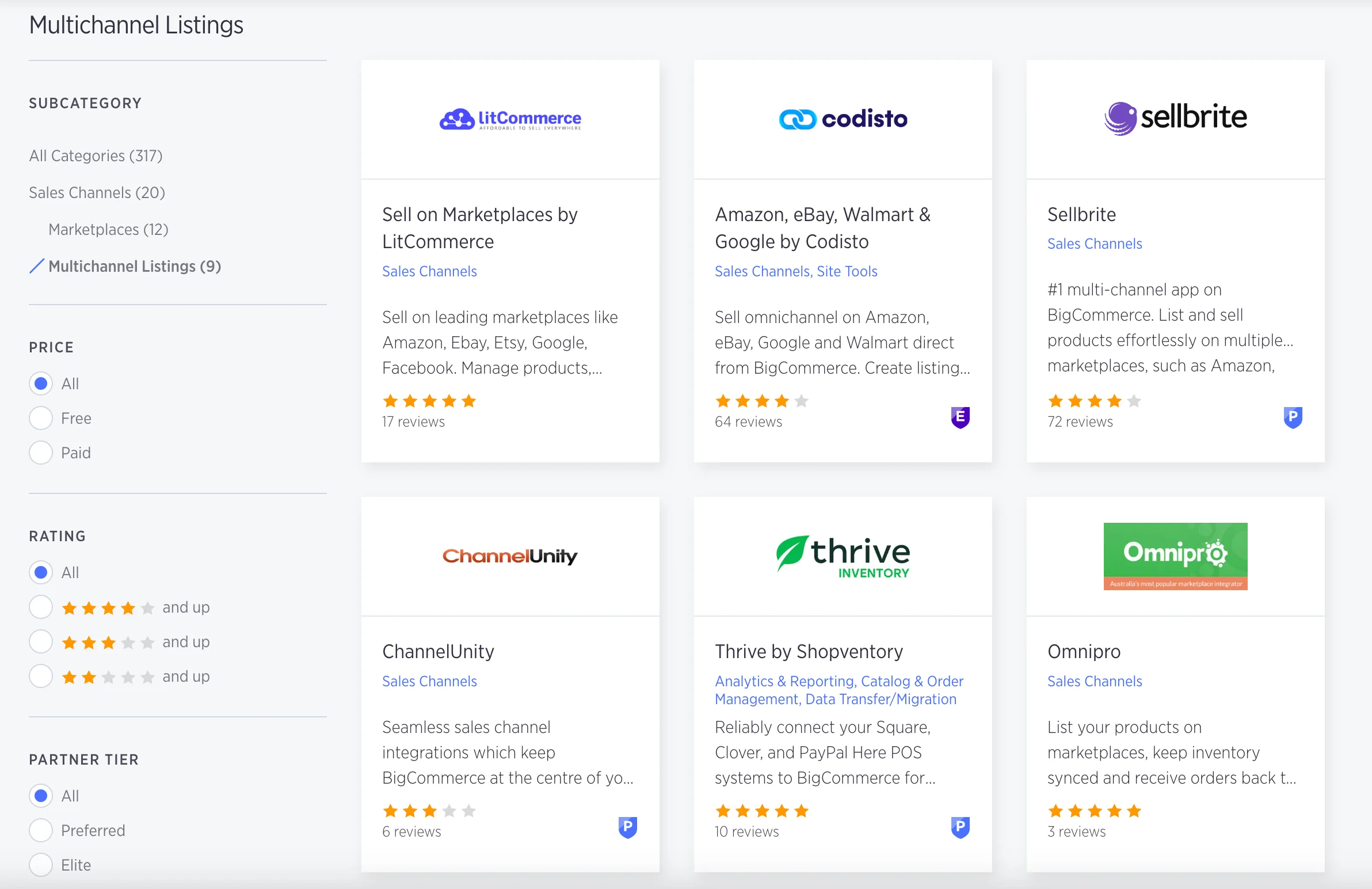
BigCommerce easily connects with tools like Google Analytics, Mailchimp, and CRM systems such as HubSpot, making it simple to automate marketing and track your store’s performance. Whether you run a small store or an enterprise-level business, there are apps for various needs. The platform also supports API integrations for businesses that want to connect with external systems and customize their setup further.
PrestaShop modules
PrestaShop takes a flexible approach to integrations with its vast selection of modules available in its marketplace. There are plenty of modules for things like advanced reporting, CRM integration, and email marketing, many of which are developed by third-party vendors.
Since PrestaShop is open-source, you have the option to build your own modules or hire developers to create custom integrations tailored specifically to your business needs. This offers a lot of flexibility but may require technical expertise and investment.
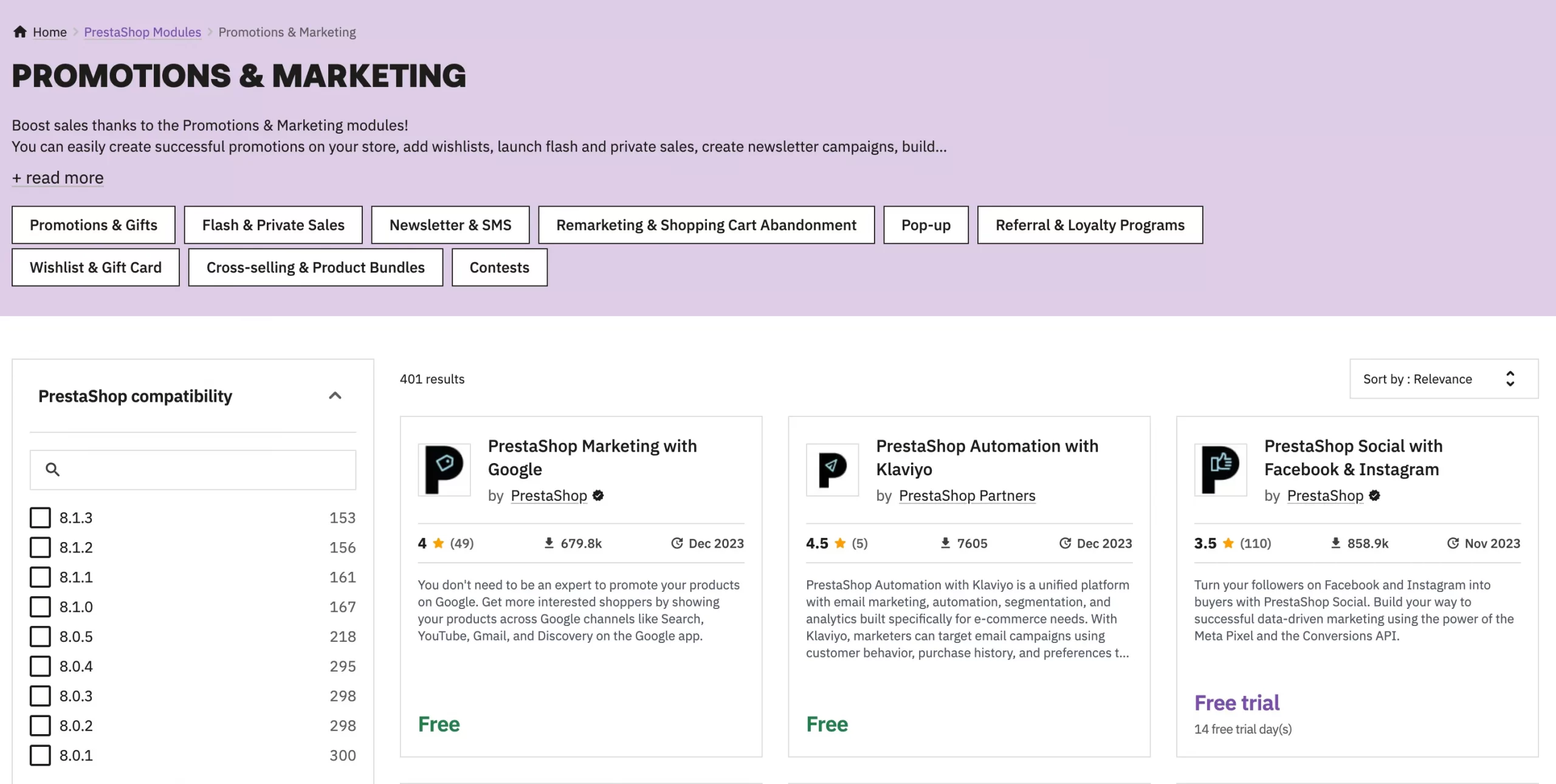
PrestaShop’s API allows you to connect with external platforms like ERP systems, which can help streamline operations for businesses with unique needs.
Editor's thoughts: As you can see, PrestaShop’s approach is ideal for businesses that want full customization and flexibility, while BigCommerce is better for those who prefer simple, plug-and-play solutions.
BigCommerce vs PrestaShop: Pricing and Cost Breakdown
Pricing is a key factor when deciding on an e-commerce platform, as it directly impacts the business’s budget and scalability. This section compares the pricing structures of BigCommerce and PrestaShop, detailing the associated costs and additional expenses users should consider.
BigCommerce pricing tiers
BigCommerce offers a few different subscription plans, each tailored for businesses at various stages of growth:
- Standard ($39/month): Includes basic features like single-page checkout and mobile-friendly templates.
- Plus ($105/month): Adds features like abandoned cart recovery and customer segmentation tools.
- Pro ($399/month): Designed for higher-volume businesses, with extras like Google customer reviews and custom SSL certificates.
- Enterprise (Custom pricing): This is for larger businesses with more specific needs, offering advanced features like API access and dedicated account management.
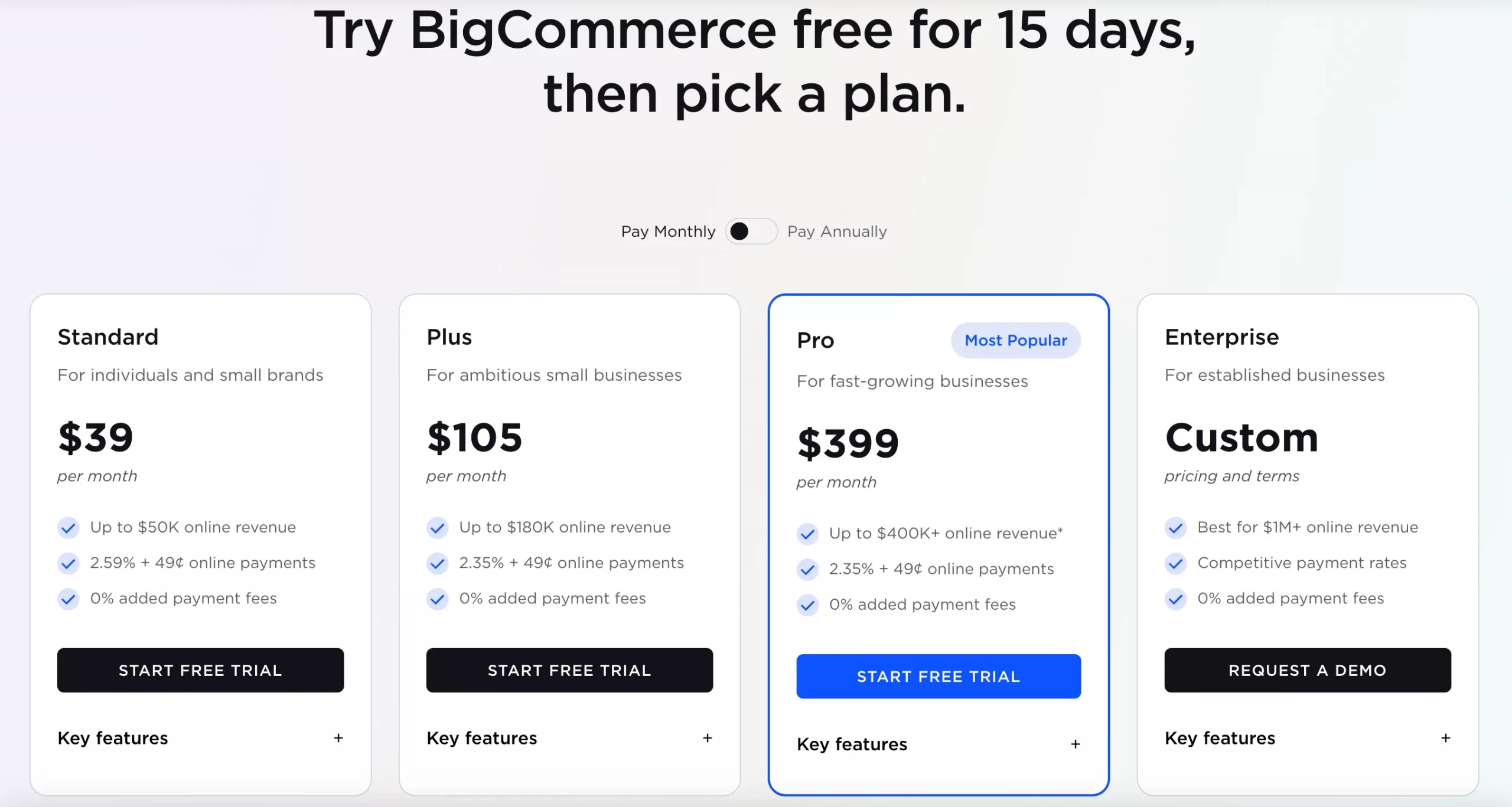
As your business grows, BigCommerce may require you to upgrade your plan, leading to higher monthly costs that might catch you by surprise. Many users find that the forced upgrades significantly impact their budget as they scale up their operations.
Additionally, while BigCommerce doesn’t charge transaction fees, you may face extra costs for third-party apps, premium themes, and payment gateway fees.
PrestaShop pricing considerations
PrestaShop is an open-source platform, which means the software itself is free. However, you must budget for other expenses like hosting, modules, and development services.
- Hosting: Typically ranges from $5 to $50/month.
- Domain registration: Generally costs between $10 and $15 per year.
- Modules and themes: While free options are available, premium modules and themes can range from $30 to over $200 each.
- Developer costs: Hiring a professional could cost between $20/hour for basic adjustments and up to $100/hour for more complex customizations.
Let’s make a calculation! For PrestaShop, the estimated costs include hosting, domain registration, modules, and developer services. With hosting costs around $30/month (average), domain cost around $1/month ($12/year divided by 12), modules/themes budget around $100/month (estimated) and developer costs around $100/month (2 hours at $50/hour).
We have the total estimated monthly cost for PrestaShop: 30 + 1 + 100 + 100 = 231 dollars.
Editor’s thoughts: I just broke down some estimated costs for each platform. However, you should consider not only the base subscription costs but also the potential additional expenses involved in using each platform to get a complete picture of their financial commitments.
Scalability and Growth Potential
As your business grows, your eCommerce platform needs to grow with it. That means it should be able to handle more traffic, bigger inventories, and a larger customer base without any interruptions. Let’s look at how BigCommerce vs PrestaShop support growth and scalability.
Scaling an eCommerce business with BigCommerce
BigCommerce is built to grow with your business, offering features and infrastructure that make it easy to scale from a small store to a large enterprise.
For bigger businesses, the Enterprise plan includes advanced tools like custom integrations, API support for automating tasks, and priority customer support. Also, BigCommerce supports multiple languages and currencies, so expanding your business to international markets is straightforward and doesn’t require much extra work.
The platform handles hosting and performance that ensures fast loading times and minimal downtime, even during busy periods. This managed environment means you can trust BigCommerce to handle the technical side as your business scales.
Scaling an eCommerce business with PrestaShop
You can add or upgrade modules to expand features like inventory management, multi-channel selling, or performance monitoring as your business grows. This allows for a highly customized approach to scaling based on your specific needs.
Since you manage your own hosting with PrestaShop, you have the option to upgrade your servers or switch to more powerful solutions as your traffic increases. However, this also means you’ll need the technical skills to manage and optimize the hosting environment effectively.
PrestaShop allows you to use performance-enhancing tools, such as caching modules and CDNs, to keep your store running fast and efficiently as it scales.
As you can see, PrestaShop is great for businesses that want full control over how they scale and are willing to invest in development and hosting upgrades as they grow. It’s ideal for those with technical expertise or access to development resources, but it may require more effort and investment compared to a managed platform like BigCommerce.
Editor's thoughts: Personally, I find that both platforms, BigCommerce vs PrestaShop supports scaling eCommerce stores. BigCommerce offers awesome priority support with its Enterprise plan, which can really help when you need it. On the flip side, PrestaShop gives you full control over your store’s development, perfect if you like to customize things your way.
BigCommerce vs PrestaShop: FAQs
BigCommerce is the go-to option for beginners because it has an easy setup process, built-in features, and a managed hosting environment for the technical side. On the other hand, PrestaShop is more suited for those who have coding skills or access to developers, as it requires a bit more technical know-how.
Both BigCommerce and PrestaShop offer support for selling internationally, including options for multiple languages and currencies. BigCommerce is easier for beginners to set up for global sales, while PrestaShop gives you more customization options if you want to fine-tune how your store operates across different markets.
BigCommerce stands out for its all-in-one, managed approach. It offers built-in tools for everything from marketing to payment processing and doesn’t require managing your own hosting or technical configurations.
BigCommerce vs PrestaShop: Final Verdict
After comparing BigCommerce vs PrestaShop based on key factors like ease of use, customization options, pricing, security, and scalability, here’s my recommendation tailored to different business needs, technical skills, and growth goals.
- Think about both the upfront and ongoing costs. BigCommerce has clear, predictable subscription plans, while PrestaShop, being open-source, might lead to variable costs for hosting, modules, and development.
- BigCommerce is perfect for those without a tech background, offering a managed environment and support. On the other hand, PrestaShop allows for full customization but requires technical skills to get the most out of it.
- If you need a platform that’s easy to launch and manage, BigCommerce is a solid choice. But if you’re aiming for a highly customized store and have the expertise to build and maintain it, PrestaShop is the way to go.
In the end, choosing between BigCommerce and PrestaShop depends on your business’s specific needs, your technical capabilities, and your long-term growth plan.
We hope this comparison has been helpful in guiding your decision between PrestaShop vs BigCommerce. For more insights and resources, check out the eCommerce platform section and connect with our eCommerce community to learn from other business owners just like you.

